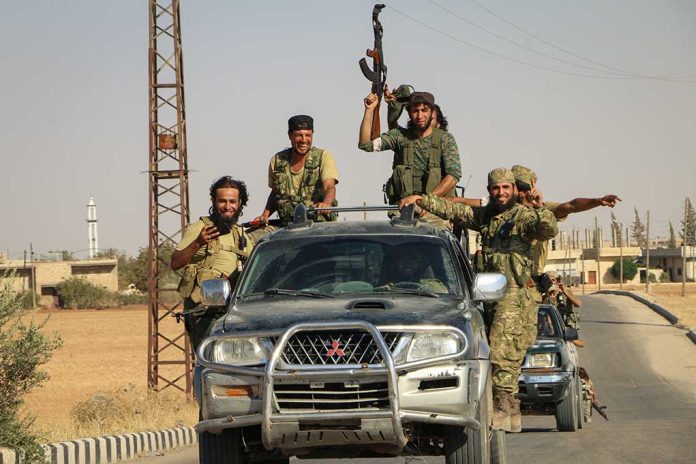
President Trump’s “Operation Rough Rider” has already cost American taxpayers $200 million in just three weeks of bombing Houthi militants in Yemen, with Pentagon officials privately admitting the campaign has shown limited effectiveness despite the massive price tag.
Top Takeaways
- The U.S. bombing campaign against Houthi militants in Yemen has cost $200 million in munitions over just three weeks, with total costs potentially exceeding $1 billion.
- Pentagon officials have privately acknowledged limited success in destroying Houthi weapons stockpiles stored in underground bunkers despite public claims of effectiveness.
- The operation has already lost several MQ-9 Reaper drones worth approximately $30 million each to Houthi defenses.
- Military planners are concerned about depleting crucial munitions stockpiles needed for higher-priority strategic concerns, particularly regarding China and Taiwan.
- The campaign may be extended, further straining military resources and requiring additional Congressional funding.
Rising Costs of Operation Rough Rider
The Pentagon has spent approximately $200 million on munitions alone during the first three weeks of Operation Rough Rider in Yemen. Named by Secretary of Defense Pete Hegseth, the campaign began in mid-March after Houthi forces threatened commercial shipping in the Red Sea. The costs include precision-guided bombs, long-range missiles, and the deployment of two aircraft carriers, bombers, fighter jets, and advanced air defense systems like Patriot and THAAD. Defense officials now project that total expenditures could soon exceed $1 billion, prompting considerations for requesting additional funding from Congress to sustain the operation.
Beyond direct munitions costs, the United States has lost valuable military assets during the campaign. The Houthis have successfully shot down several American military drones, including three MQ-9 Reapers, each carrying a price tag of approximately $30 million. As of December 2024, the U.S. had only 230 MQ-9 Reaper drones in its stockpile, making these losses particularly significant for military planners concerned about maintaining adequate force projection capabilities across multiple global theaters.
Limited Strategic Impact Despite Heavy Bombing
While President Trump has publicly claimed that the Iranian-backed Houthi militants have been significantly weakened by the strikes, confidential Pentagon briefings to Congress tell a different story. Defense officials have acknowledged that the bombing campaign has had limited success in destroying the Houthis’ munitions stored in underground bunkers. The intensity of the bombing has been heavier than previous strikes under the Biden administration and more extensive than publicly described, yet Houthi forces have responded by reinforcing their defenses and adapting their operational tactics.
Pentagon spokespeople continue to assert that the strikes have disrupted Houthi command structures and reduced their missile attack capabilities on commercial shipping. However, some military officials have expressed doubts about the long-term impact of the operation, with internal estimates suggesting the strikes may need to continue for an unforeseeable amount of time to achieve significant strategic objectives.
Strategic Resource Concerns
The extensive use of precision munitions in Yemen has triggered concerns among military planners about potential impacts on other strategic priorities. Some Pentagon officials are particularly worried about depleting U.S. stockpiles needed to deter a potential Chinese invasion of Taiwan. The consumption of precision-guided munitions, which are manufactured at relatively slow rates compared to their use in combat operations, could leave the United States with reduced capacity to respond to more critical threats in the Indo-Pacific region.
The ongoing operation’s growing costs come at a time when the Defense Department is already managing tight budgetary constraints across multiple operational theaters. If Operation Rough Rider continues as projected, it will likely require the Pentagon to formally request supplemental funding from Congress. This raises questions about America’s strategic priorities and resource allocation as the Trump administration balances multiple international military commitments while attempting to maintain readiness for potential larger-scale conflicts with near-peer competitors.
Future Implications
As Operation Rough Rider continues into its second month, the financial and strategic challenges raise fundamental questions about the long-term objectives and costs of U.S. involvement in Yemen. The campaign represents a significant financial investment in targeting a non-state actor with limited impact on global American interests compared to other strategic concerns. Military analysts are increasingly questioning whether the campaign’s results justify its escalating costs, particularly as evidence suggests the Houthi forces remain capable of conducting operations despite weeks of intensive bombing.
With the Pentagon already considering requests for additional funding while privately acknowledging limited operational success, Operation Rough Rider illustrates the difficult balance between projecting American military power and managing finite defense resources. As costs potentially approach and exceed the billion-dollar mark, both military planners and congressional oversight committees will face difficult decisions about the sustainability and strategic value of continued operations against Houthi forces in Yemen.






















